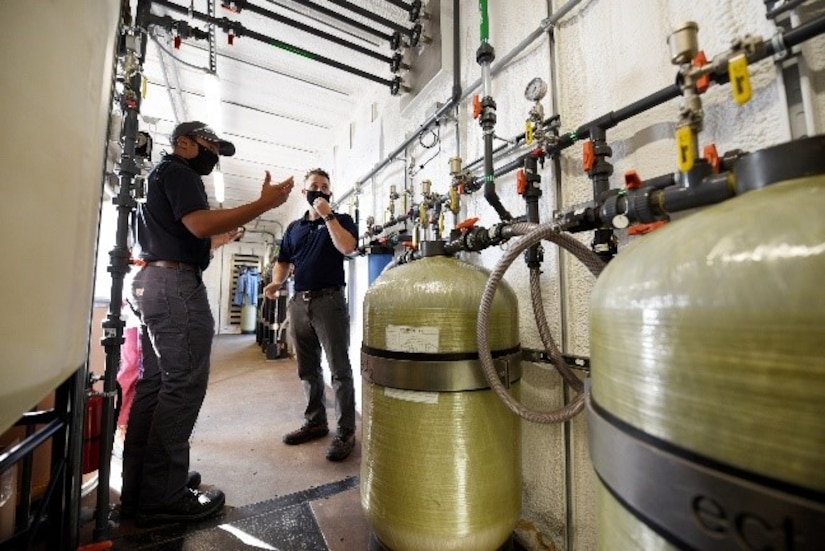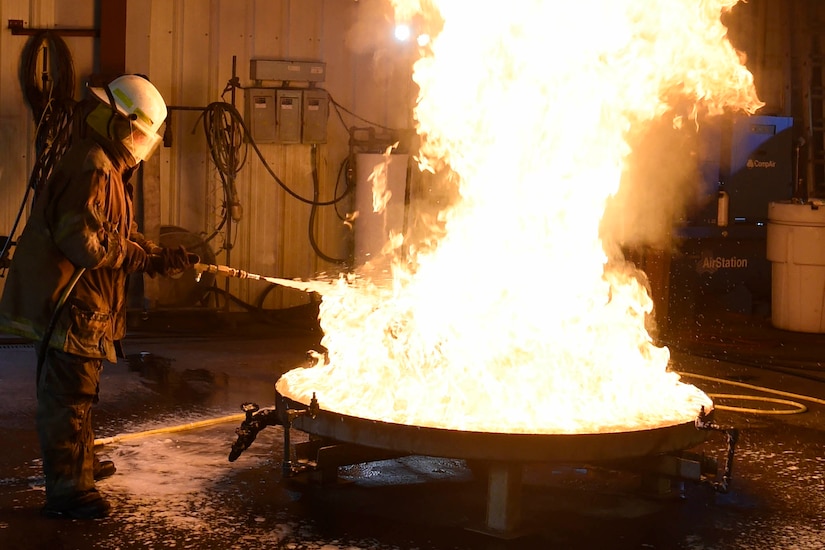July 19, 2021 , DOD News
On Wednesday, July 14, the Defense Department hosted, for the first time, an online forum that allowed for an open and transparent dialogue between the department and stakeholders affected by the presence of perfluoroalkyl and polyfluoroalkyl substances, or PFAS.
Department leaders created the event, the first of what is expected to be a continuing series of engagements, to increase the department's communication with affected communities and other stakeholders, and to enhance transparency regarding the department's PFAS-related activities.

Richard G. Kidd, the deputy assistant secretary of defense for environment and energy resilience, hosted the forum and told attendees that while it may take years for the department to fully define the cleanup requirements for PFAS — and possibly decades to actually do the cleanup — the department would remain committed to both the cleanup effort itself and communication with those affected by what is happening.
"We are intent on making sustained progress on all PFAS challenges," Kidd said. "We will continue to invest in science and technology, and we will demonstrate a commitment to clear and constructive dialogue with all stakeholders, such as ... the participants today."
To fight aircraft fires on flight lines, the U.S. military has, for years, used aqueous film-forming foam, or AFFF, that contains PFAS. PFAS is a group of man-made chemicals that includes perfluorooctane sulfonate, or PFOS, and perfluorooctanoic acid, or PFOA.

Over time, those substances have migrated into the groundwater under military installations and into drinking water. The department has been working for years to address these PFAS-related challenges, and continues to work in partnership with federal, state, and affected community stakeholders.
This week's inaugural public forum strengthens the DOD's commitment to an open, ongoing and transparent dialogue about PFAS with affected stakeholders.
Before taking questions from forum participants, Kidd discussed where the department is now in its cleanup effort. The DOD "follows the federal cleanup law, the Comprehensive Environmental Response Compensation and Liability Act, [or] CERCLA, also known as Superfund," for its PFAS cleanups. He said the department is approaching the 20% mark in conducting preliminary assessments and site inspections at installations that potentially used PFAS.
"The Department of Defense has identified 698 installations, including National Guard sites, where PFAS may have been used or potentially released," Kidd said.

Of these 698 installations, he said, initial investigations are complete at 129. During the preliminary assessments and site inspections, the department evaluates historic records of PFAS use at installations; conducts site visits; and takes samples of drinking water, groundwater or soil to determine what, if anything, must be done.
So far, 63 of the locations assessed need no further action, while 66 need more detailed investigation before determining cleanup actions, Kidd said, adding that when it's needed, the department can react quickly to provide immediate, short-term remediation.
"This allows the department to take quick actions to provide alternative water when PFOS or PFOA from DOD activities is found in drinking water above EPA's health advisory," he said.
One example of a quick reaction was when the DOD recently provided bottled water to residents within 96 hours of PFOS or PFOA from DOD activities being found above the EPA health advisory, Kidd said. DOD can also provide filtration systems for well heads or connection to municipal water sources. So far, short term actions have been conducted at 49 locations.

"This step enables the Department of Defense to stop exposure to PFOS and PFOA in drinking water while we continue the long-term investigation and remediation activities," he said.
Long-term solutions can take years, Kidd said.
"After we have defined the extent and nature of the plume in the groundwater, the department will drill wells at strategic locations and pump the PFAS-containing water out of the ground, through a filter and back into the ground," he said. "This process is known as pump-and-treat and has been used for decades for the cleanup of other chemicals; [it can] take a long time, especially when the standard is measured in parts per trillion. In light of that, [the] DOD is investing significant amounts of funds in research and development of new technologies."
The department is making significant efforts to develop and evaluate new technologies for the treatment of PFAS, Kidd said. It has invested $90 million through fiscal year 2021 toward that effort and plans an additional investment of $70 million through fiscal year 2025.
"These efforts include a range of activities related to PFAS detection, analysis, treatment and in situ destruction," he said.
Right now, Kidd said, the defense department no longer uses PFAS-containing AFFF for firefighting training events unless it can be contained during their use. Additionally, he said, the department is looking for alternatives to PFAS-containing AFFF for use in fighting fires.

"Since 2017, we have spent $28 million to test nearly 20 potential PFAS-free AFFF replacements, some of which are commercially available," he said. "We are moving through that testing process ... and we believe that we have a number of promising candidates."
What remains a challenge, he said, is finding a good replacement for suppressing jet fuel-based fires that also considers other factors — like compatibility, corrosiveness, viscosity and human health and ecological toxicity concerns.
Kidd responded to submitted questions and addressed topics including
how state standards for PFAS play into the federal cleanup effort. "We
follow the CERCLA process. State standards factor into that process,"
Kidd explained. The DOD is also required by statute to comply with state
drinking water standards when the DOD supplies the drinking water.






No comments:
Post a Comment